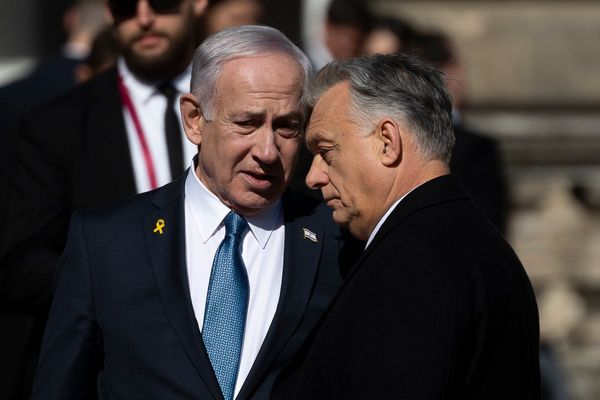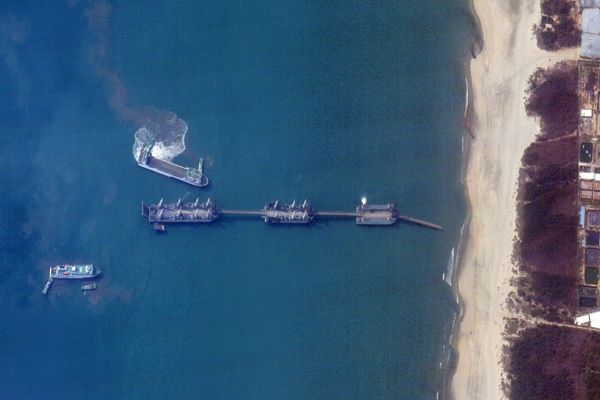
Over the next few months, we are almost certain to see lots of chaos swirling around the NBA. The good kind of chaos, though.
The league is in a unique position right now. There’s more parity in the league now than there has been in decades. In total, there are 21 teams with a record of either 3 or fewer games below .500 or 3 games or more above .500.
That number is up from 17, which was the most the league had ever seen a quarter of the way through the season, according to Howard Beck of Sports Illustrated.
So here’s what that means. More than half of the teams in the NBA probably think they can compete for a playoff spot, at the bare minimum. And a smaller fraction of that group probably thinks, if things break right, then their team can probably compete for a championship.
That’s exactly why trade season is about to be wild. There are going to be lots of rumors flying around with teams trying to pry players from one another. It can either be very quiet with teams hoarding their players to try and compete or a complete madhouse with teams trying to shuffle the deck and make a run. That’s the fun of it — we have no idea what will come from now until February.
Regardless, there are certain things you need to know before we dive into this chaotic period. So let’s dig in.
December 15 is the unofficial tipoff of trade season
You’ve probably heard about this December 15 date a few times by now in reference to when NBA teams can really start making trades. It’s a very important date.
It’s not that NBA teams can’t make trades now — they can. Once the league year transitions in the summer, teams can start making trades. But free agents who sign with new teams in the offseason aren’t eligible to be traded until either December 15 in a given season or 3 months after their official signing date — whichever mark comes later.
ESPN’s Bobby Marks put this in some perspective with this insane stat. As it stands, 73% of players are eligible to be traded. But after the December 15 deadline, that number skyrockets to 89%.
73% of players are eligible to be traded now.
That number increases to 89% on Dec. 15 when a majority of free agents that signed contracts in the offseason can be traded.
Here is the list of who can (broken down by tier) and can't be traded https://t.co/F0ejrkg67z
— Bobby Marks (@BobbyMarks42) December 8, 2022
That’s why this date of December 15 is so important.
January 15 is important, too

This is a date you’ve probably heard a lot less about to this point, but it came up during one of the league’s pivotal moments this summer.
Kevin Durant demanded a trade and wanted to be moved to the Phoenix Suns. Deandre Ayton was rumored to be part of a potential Suns package, but that was ruined when the Indiana Pacers signed Ayton to an offer sheet. The Suns matched the sheet to retain Ayton, but they couldn’t trade him because of a similar salary cap rule to the one above.
Free agents who re-sign with their previous team in the offseason who got a raise of at least 20% and were signed using a team’s Bird rights or early Bird rights isn’t eligible to be traded until January 15.
So the Suns could move Deandre Ayton this season if they wanted to. But it couldn’t be before that January 15th date.
The trade deadline

The trade deadline this season is on February 9.
It’s the very last day teams are able to actually make trades. This is the very last avenue for significant roster improvement during the regular season, which is exactly why it’s always chaotic on the day that it comes.
We’ve seen huge moves on and around this day — especially in recent years. Domantas Sabonis to the Kings, Nikola Vucevic to the Bulls, James Harden to the 76ers. The list goes on.
We could see more of that this year, too.
Here's when contracts are fully guaranteed.
There are some players around the league who only have partially guaranteed contracts for the season, meaning that if they’re waived by a team before a certain date they’ll only get a portion of their set salary.
The teams with players on partially guaranteed deals have until January 10 to waive those players before their contracts become fully guaranteed for the rest of the season. Players who are on two-way contracts but are active on an NBA roster get fully guaranteed deals on January 20.
That’s important to note during trade season because teams routinely trade for players on non-guaranteed or partially guaranteed deals. They could be waived to clear cap space and open up a roster spot or move below the luxury tax threshold if need be.
March 1 is the roster cutoff for the playoffs
After trade season, there’s always that period where teams are looking to sign the players who might be useful after they’re cut to make roster space. And there are going to be a lot of teams vying for the playoffs this season.
So it’s worth noting that the final date to sign a player and still have them be eligible to play in the postseason is March 1. After that, they won’t be competing come the end of April and May.







